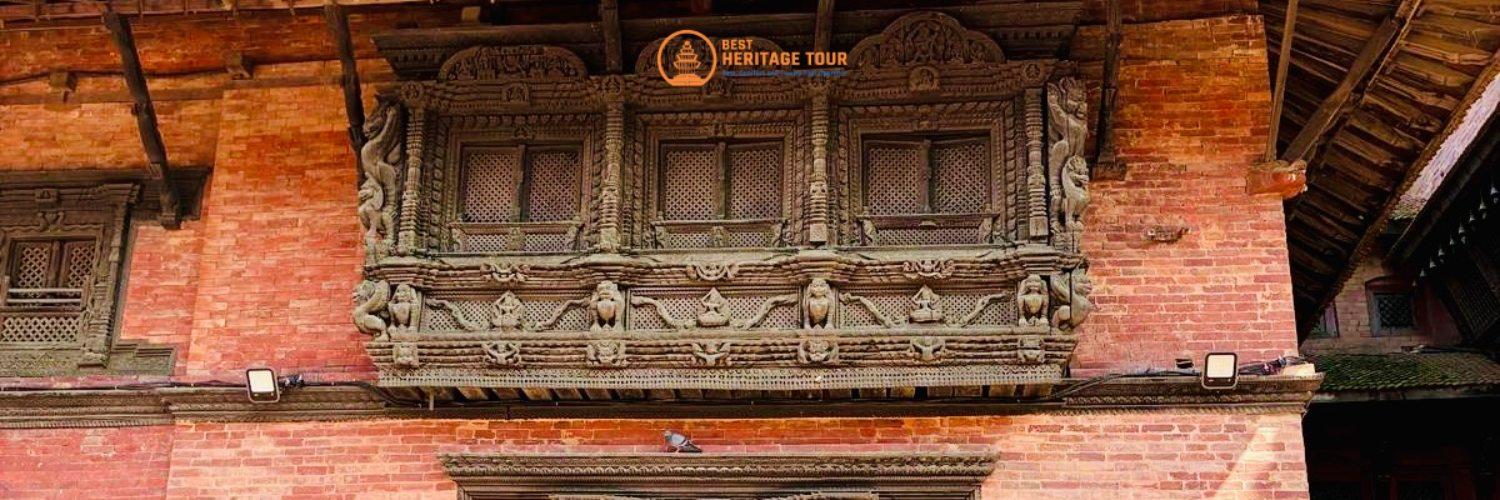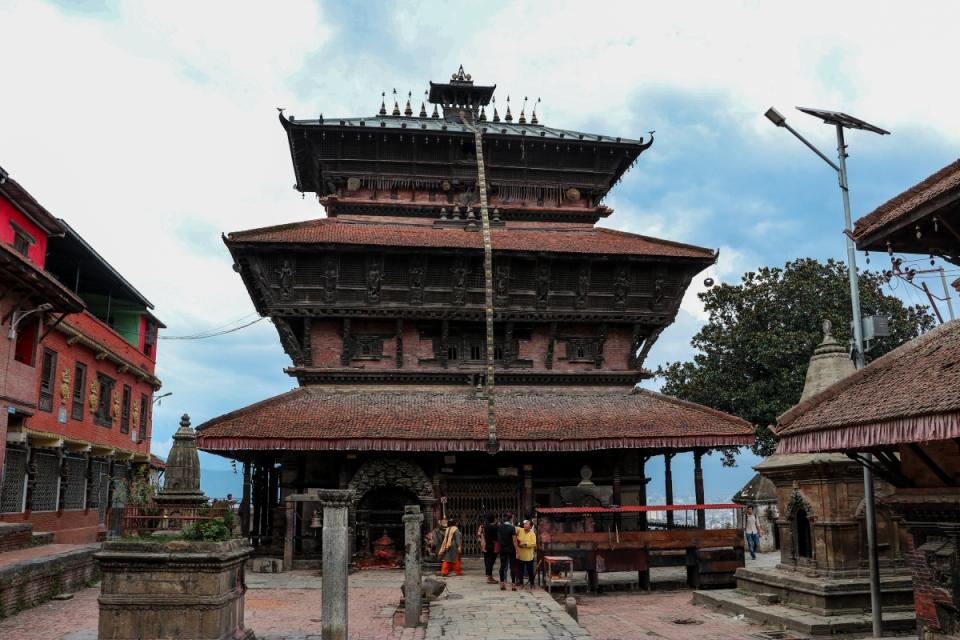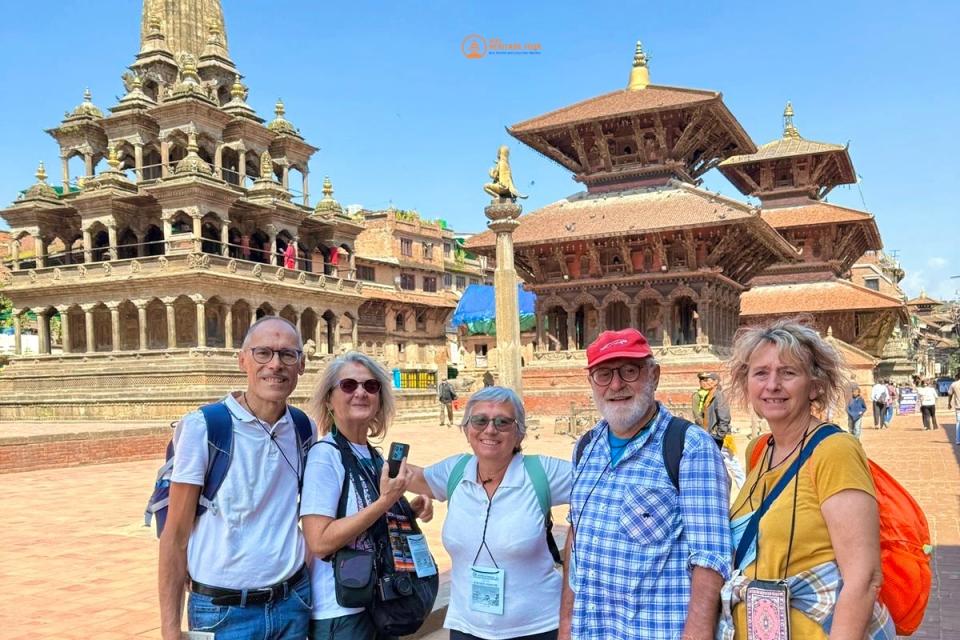The Kathmandu Valley is a cultural treasure trove, known for its ancient temples, palaces, and centuries-old settlements. Among its diverse communities, the Newars stand out as the valley’s indigenous people, preserving a rich culture that seamlessly blends art, religion, and social customs. Exploring Newari culture through the valley’s heritage sites is like stepping back in time, where every street, square, and monument tells a story of tradition, spirituality, and resilience.
The valley’s Newari heritage offers more than architecture or festivals - it is a living culture, where rituals, cuisine, arts, and daily practices thrive in harmony with modern life. Trekkers, historians, and cultural enthusiasts alike can witness how the Newars have shaped the identity of the Kathmandu Valley while maintaining their unique traditions. Visiting these heritage sites with Best Heritage Tour ensures a guided, insightful, and immersive cultural experience.
Newar Architecture - A Visual and Spiritual Feast
Newari architecture is an iconic feature of the Kathmandu Valley, reflecting centuries of craftsmanship and cultural symbolism. From residential courtyards to grand palaces, every structure showcases the Newars’ architectural ingenuity:
-
Intricate Wood Carvings: From ornate windows and doorways to ceremonial platforms, the carvings depict Hindu and Buddhist deities, animals, and mythological scenes. Each piece tells a story and highlights local artistry.
-
Pagoda-Style Temples: The iconic multi-tiered temples, like those in Kathmandu Durbar Square, combine aesthetic beauty with spiritual significance. The tiered design represents the cosmic connection between humans and the divine.
-
Courtyard Layouts: Traditional Newar houses are built around courtyards, which serve as communal spaces for family activities, festivals, and rituals. These courtyards are also venues for music, dance, and seasonal celebrations, creating a microcosm of Newari social life.
-
Stone and Brick Work: Many temples and palaces showcase a seamless combination of red brickwork and carved stone, reflecting a sophisticated understanding of materials and structural stability.
Exploring sites like Patan Durbar Square, Bhaktapur Durbar Square, and Kathmandu Durbar Square allows visitors to appreciate the layers of history, artistry, and religious significance embedded in Newar architecture.
Festivals and Rituals - Experiencing the Vibrancy of Newari Culture
The Newar community is known for its rich festival calendar, with celebrations that involve elaborate rituals, traditional music, and communal participation. Festivals are not only religious expressions but also opportunities for social cohesion and artistic expression:
-
Indra Jatra: This festival in Kathmandu features masked dances, chariot processions, and worship of the living goddess Kumari. It blends Hindu and Buddhist traditions, providing a dynamic cultural experience for visitors.
-
Bisket Jatra: Celebrated in Bhaktapur to mark the Nepalese New Year, it includes pulling chariots, performing ceremonies, and sharing festive meals. This festival showcases communal strength, tradition, and artistry in action.
-
Gai Jatra: Observed to honor deceased relatives, it involves parades, performances, and humor, reflecting the Newars’ unique approach to life, death, and remembrance.
-
Other Rituals: Daily pujas, lighting butter lamps, and seasonal ceremonies demonstrate the integration of spiritual practice into everyday life.
Participating in or observing these festivals provides a firsthand experience of Newari social and religious life, leaving travelers with lasting memories.
Cuisine - Savoring the Flavors of Newari Tradition
Newari cuisine is a window into the community’s history, lifestyle, and cultural creativity. It is rich in flavors, textures, and traditions, offering travelers a taste of the Himalayan way of life:
-
Staple Dishes: Favorites include Yomari (sweet steamed dumplings filled with jaggery and sesame seeds), Kwati (mixed bean soup), and Bara (savory lentil pancakes). Each dish carries cultural significance and is often linked to festivals.
-
Community Feasts: During major celebrations, entire neighborhoods come together to prepare and share food. These communal meals strengthen social bonds and reflect the cooperative spirit of Newar communities.
-
Cooking Techniques: Traditional methods like wood-fired stoves and stone grinding enhance the authenticity of flavors, connecting visitors to centuries-old culinary practices.
-
Seasonal Ingredients: Fresh vegetables, grains, dairy products, and locally sourced herbs ensure a healthy and flavorful diet adapted to the Himalayan environment.
Sampling Newari cuisine offers more than taste - it is a cultural immersion that connects travelers with daily life and traditions.
Art, Craft, and Handicrafts - Preserving Generations of Skill
Newar artisans are renowned for their metalwork, wood carving, pottery, and painting, reflecting the community’s creativity and devotion:
-
Paubha Painting: These traditional scroll paintings depict Buddhist and Hindu deities with precise iconography and vibrant colors. They serve both devotional and educational purposes.
-
Metal Craft: Artisans create intricate statues, ritual objects, and ceremonial bells used in temples and monasteries, blending artistry with spirituality.
-
Wood Carving: Elaborate struts, windows, and doors often feature mythical figures, historical narratives, and religious symbols, enhancing both beauty and function.
-
Textiles and Weaving: Traditional Newari fabrics, often used in clothing and ceremonial garments, demonstrate exceptional craftsmanship and attention to detail.
Visiting artisan workshops or local markets allows travelers to witness the process behind centuries-old art forms, providing deeper appreciation for Newar heritage.
Spiritual Life - Temples, Monasteries, and Daily Devotion
Spirituality is deeply intertwined with daily life for the Newar people. Their temples, shrines, and monasteries form the spiritual backbone of the community:
-
Daily Rituals: Locals perform morning and evening prayers at household shrines or communal temples, often spinning prayer wheels and offering incense or flowers.
-
Monasteries: Buddhist monasteries provide quiet spaces for meditation, teachings, and rituals, offering trekkers an opportunity to observe serene spiritual practices.
-
Stupas and Mani Walls: These sacred structures dot neighborhoods and trails, reinforcing religious devotion and serving as spiritual landmarks for pilgrims and travelers.
-
Ceremonies and Blessings: Visitors may witness weddings, initiation rituals, or community blessings that reflect the integration of religion into social life.
These spiritual practices make Kathmandu Valley a living museum of Newari faith and devotion.
Community Life - Preserving Tradition Amid Modernity
Despite the rapid urbanization of Kathmandu, Newar communities have managed to preserve their cultural essence while adapting to modern life:
-
Neighborhood Cohesion: Families and neighbors participate in shared responsibilities, ceremonies, and community decision-making.
-
Education and Cultural Continuity: Children learn traditional crafts, rituals, music, and dance from elders, ensuring that heritage is passed down through generations.
-
Blending Modern and Traditional: Modern amenities coexist with age-old practices, allowing the community to thrive without losing its identity.
-
Cultural Tourism: Guided tours with organizations like Best Heritage Tour encourage responsible tourism, helping locals maintain traditions and sustain livelihoods.
Walking through Newar neighborhoods provides a firsthand glimpse into how a culture can remain vibrant and relevant in today’s world.
Why Explore Newari Culture in Kathmandu Valley Heritage Sites
Exploring Newari culture offers travelers:
-
Immersive Cultural Experience: Participation in festivals, rituals, and daily life enriches understanding.
-
Artistic Appreciation: Architecture, carvings, and painting highlight centuries of creativity.
-
Historical Insight: Visitors learn about the Newars’ role in shaping the Kathmandu Valley’s cultural landscape.
-
Spiritual and Culinary Connection: Observing rituals and sampling traditional cuisine creates holistic engagement with the culture.
Travelers guided by knowledgeable experts or organized tours ensure a deeper understanding while respecting local customs and heritage.
Conclusion - Kathmandu Valley’s Cultural Heartbeat
The Newari culture in the Kathmandu Valley is a vibrant mosaic of architecture, festivals, art, cuisine, and spirituality. By visiting heritage sites, interacting with communities, and experiencing daily life, travelers gain a holistic understanding of Nepal’s rich cultural heritage.
For those seeking an educational and immersive journey, exploring Newari culture with Best Heritage Tour provides a safe, engaging, and unforgettable experience. Witnessing living traditions, tasting authentic cuisine, and participating in rituals allows visitors to carry a piece of the valley’s timeless heritage home with them.
Phone/WhatsApp/Viber: +977-9851149197
Email: info@bestheritagetour.com / bestheritetour@gmail.com
Website: www.bestheritagetour.com
Office: Thamel Marg, Kathmandu, Nepal
Author: Best Heritage Tour
Date: 17th August, 2025



